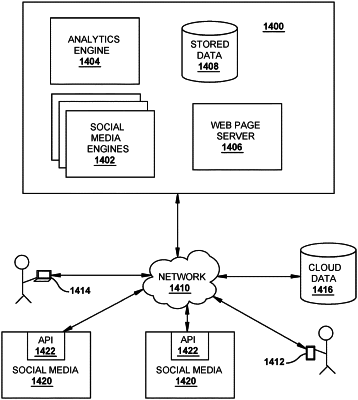| CPC G06Q 50/01 (2013.01) [G06F 16/24575 (2019.01); G06F 16/25 (2019.01); G06Q 10/107 (2013.01); G06Q 50/265 (2013.01); H04L 51/224 (2022.05); H04L 51/52 (2022.05); H04L 67/53 (2022.05)] | 20 Claims |

|
1. An event-based social media system, comprising:
a user interface configured to receive animal-related event data from a first user, wherein the event data is associated with a missing animal, wherein the event data identifies a type of the missing animal selected from a plurality of animal types and a geographic location, wherein the plurality of animal types comprises a first animal type and a second animal type;
a database configured to store animal-related event data from a plurality of users, wherein the plurality of users comprises the first user and a second user; and
an event matching engine configured to
determine an animal travel distance for the missing animal associated with the first user, wherein the animal travel distance is a calculated distance the missing animal could have traveled from the geographic location and is determined based on the type of the missing animal, an elapsed time from an event associated with the event data of the first user, and geographic data, wherein the animal travel distance for the first animal type is different than the travel distance for the second animal type, wherein the geographic data identifies a barrier, and wherein the barrier is any of a man-made barrier and a natural barrier;
calculate a user distance based on the event data received from the second user;
determine if the event data from the second user matches stored event data from the first user based at least in part on whether the determined animal travel distance is greater than or equal to the calculated user distance; and
wherein the user interface is further configured to generate a user alert based on matching event data and receive a user confirmation from one or more of the plurality of users in response to the user alert.
|